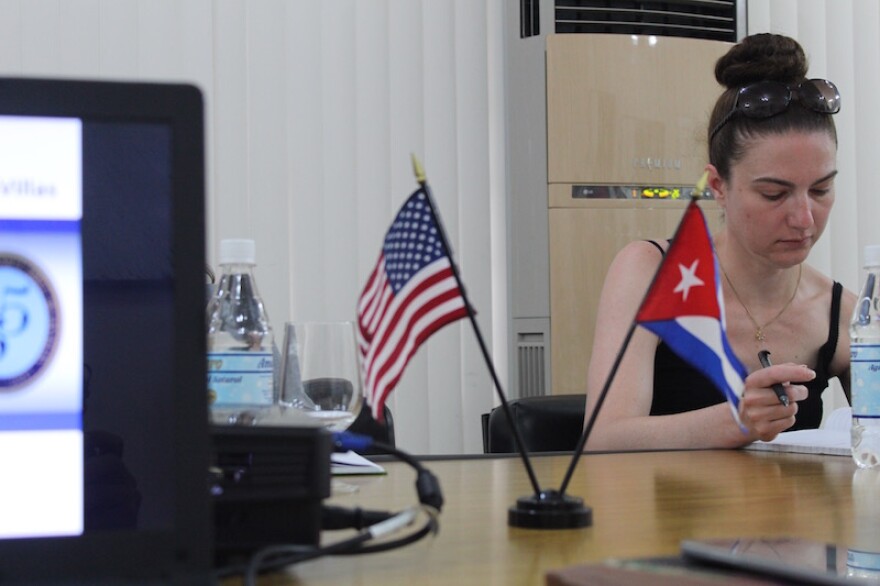El Gran Teatro de La Habana is located next to the Capitol building in the heart Old Havana. This prominent placement speaks to the importance of ballet in Cuban society. And so when WKU dance professor Anna Patsfall had a chance to travel with colleagues to Cuba in May, it meant an opportunity for her to take in a performance of Swan Lake at the venerable theater.
“It’s very well preserved, it’s a very old space, it’s a very beautiful space,” said Patsfall.
But it wasn’t just the venue that stood out to her.

“Cuban audiences, the way that they watch dances is much different than the American audience. We tend to be very reserved when we watch dance, we think we need to be quiet and respectful,” she said. “In Cuba, it’s somewhat of an event. The community gets together and there’s a lot of yelling and clapping and hootin’ and hollerin’. It’s quite a different experience. But the dancers love it, they respond to that."
Much of Patsfall’s ballet training came in the Cuban style, she even had two Cuban teachers, so she was already familiar with the country’s short, but important historical influence on ballet – developing talent like the legendary ballerina Alicia Alonso.
“It’s not a long past if you’re thinking about the Russians or event he French that go back to the 1500s,” said Patsfall. “Their style really began in the ‘50s and ‘60s. But there are numerous famous, very famous, in the United States and around the world, dancers that have come from the Cuban Ballet School”
One of her objectives in Cuba this summer was to witness first hand that school, which begins training performers as young as 8 or 9 years old and runs up through high school when select students are chosen to join the National Ballet Company.
“The school is free. The National Ballet School and all of the schools that are spread throughout the island under the National Ballet title, they’re all free tuition,” said Patsfall.
But while the schools are free, young ballet dancers are not immune from the economic hardships that abound in Cuba. Patsfall says the schools often lack supplies like pointe shoes and they have to make do with what they have. She remembers noticing what one of the young students was wearing.
“Every little hole, snag – had been sewn up. So her tights were full of thread because they had been re-sewn and re-sewn,” said Patsfall. “She’s wearing the one same pair of tights over and over again and that’s just something here we’re not used to.”
It’s a story speaks to the hard work and perseverance displayed by Cuban ballet dancers. But is there something deeper within the Cuban people? A natural grace of movement on display from grand theaters to the parties, streets, restaurants and dance clubs of Havana where there always seems to be music and dancing.

“That was a curiosity that I had when we went there,” she noted. “I’m not sure that I found that yet. I think there’s probably a little more freedom of the torso, freedom of the upper body that could come from the kind of social dances that are popular there.”
And as she continues her study of the Cuban ballet style, Patsfall is eager to share what she’s learned with her students back home at WKU.
Exploring Cuba was created in partnership with WKU's Office of International Programs. The International Year of Cuba kicks off on campus with Cuba 101 presented by history professors Andrew McMichael and Marc Eagle on Tuesday, Sept. 4 at 4 pm in Gary Ransdell Hall.


